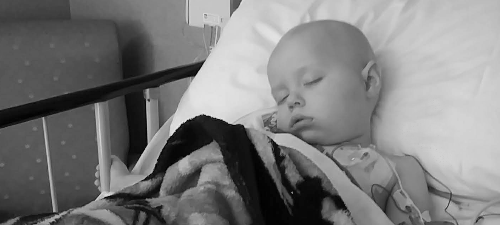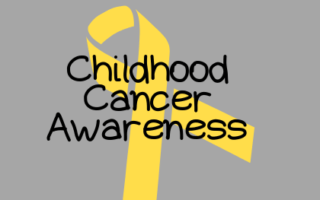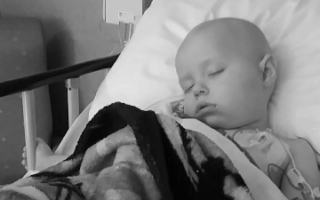We may earn money or products from the companies mentioned in this post.
(This post may contain affiliate links and I may earn a small commission when you click on the links at no additional cost to you.)
Childhood is a time of dreams, laughter, and boundless possibilities. It is a chapter of life where imagination knows no bounds, and a scraped knee is the most common concern. But sometimes, the story takes a harrowing twist when childhood cancer enters the picture. Suddenly, the world of toys and playdates becomes a battleground, and childhood innocence faces an unimaginable adversary.
This is the reality for thousands of children and families around the world. Understanding this reality and demystifying this complex and emotional topic is a critical step toward improving the lives of young patients, and their families, and advancing research for more effective treatments. Together let’s shed light on the intricacies of childhood cancer in the hopes of offering insights and support for all those affected by this challenging reality.
Types of Childhood Cancer
Childhood cancer is a term that encompasses a variety of diseases affecting children, each with its own characteristics, challenges, and treatment approaches. To gain a comprehensive understanding of childhood cancer, it’s essential to explore the various types that affect young patients. Here, we delve into some of the most prevalent types of childhood cancer, exploring their distinct features:
Leukemia
Leukemia is the most common type of childhood cancer, accounting for nearly one-third of all cases. This disease primarily affects the blood and bone marrow, where an overproduction of abnormal white blood cells interferes with the body’s ability to fight infections. There are two primary forms of leukemia in children: acute lymphoblastic leukemia (ALL) and acute myeloid leukemia (AML). The good news is that significant progress has been made in the treatment of leukemia, with many children achieving complete remission and long-term survival. However, these treatments can and do leave lasting side effects and complications for these survivors.
Brain Tumor
Brain tumors in children encompass a range of growths within the brain or spinal cord. They can be benign (non-cancerous) or malignant (cancerous), and their symptoms and prognosis can vary widely. Common types of childhood brain tumors include medulloblastomas, ependymomas, and gliomas. Early detection, surgery, radiation therapy, and advances in targeted treatments have improved the outlook for children with brain tumors.
Lymphoma
Lymphoma in children typically falls into two categories: Hodgkin lymphoma and non-Hodgkin lymphoma. These cancers originate in the lymphatic system, which plays a crucial role in the body’s immune system. Lymphomas in children are often highly curable, with a combination of chemotherapy and targeted therapies.
Neuroblastoma
Neuroblastoma is a cancer that develops from nerve cells in the adrenal glands, abdomen, chest, or neck and commonly affects children under the age of five. It can vary in severity, from mild cases that spontaneously regress to more aggressive forms that require intensive treatment. Early diagnosis and tailored therapy are crucial.
Wilms Tumor
Wilms tumor is a kidney cancer primarily found in children aged 3 to 4 years. It is highly treatable, and the majority of children diagnosed with this cancer can expect a full recovery with proper medical care and surgery.
Retinoblastoma
Retinoblastoma is a rare childhood cancer that develops in the retina of the eye. It is typically diagnosed in infants and toddlers and can result in vision impairment or blindness. Early detection and treatment are crucial for preserving vision and ensuring a positive prognosis.
Rhabdomyosarcoma
Rhabdomyosarcoma is a rare and aggressive form of cancer that primarily affects children. It originates in the cells that would normally develop into skeletal muscles, muscles that control voluntary body movements. This cancer can occur in various parts of the body, including the head, neck, arms, legs, and trunk. There are different subtypes and each has distinct characteristics and may require different treatment approaches. Advances in medical care have improved the prognosis for many. Early diagnosis and combination treatment offer the best possible outcome.
Bone Cancers
Bone cancers in children are relatively rare but can be particularly challenging to manage. These cancers typically originate in the bone tissue and can affect the bones’ growth and development. There are several types of bone cancers that can occur in children, with osteosarcoma and Ewing sarcoma being the most common. Osteosarcoma is the most prevalent and typically occurs in the long bones, such as the arms and legs, during the adolescent growth spurt. Ewing sarcoma often occurs in the pelvis, chest wall, or long bones. Both are aggressive and require a combination of surgery, chemotherapy, and sometimes radiation to prevent its spread.
Causes of Childhood Cancer
While the exact origins of many childhood cancers remain unclear and are a subject of ongoing research, scientists have identified some potential factors that may play a role in the development of these diseases. It’s crucial to understand that childhood cancer is distinct from many adult cancers in terms of its causes. In most cases, childhood cancers are not linked to lifestyle choices or behaviors such as smoking or poor diet. Here, we’ll explore some of the complex elements that scientists believe may play a role in the onset of childhood cancer:
Genetic Factors
Genetics can significantly influence childhood cancer risk. In some instances, a child may inherit genetic mutations from their parents that predispose them to cancer. These inherited mutations can increase the likelihood of developing specific types of cancer such as retinoblastoma or neuroblastoma. Additionally, some genetic conditions, like Down syndrome, are associated with a higher risk of childhood leukemia. While these genetic factors are not the sole cause, they can contribute to a heightened vulnerability.
Environmental Exposures
Exposure to environmental factors during pregnancy or early childhood is an area of ongoing research into the causes of childhood cancer. Certain environmental exposures, such as radiation, chemicals, or toxins, are being studied for potential links to cancer development While there have been associations between some environmental exposures and an increased risk of cancer, such links are not well-established, and further research is needed to better understand these relationships.
Viral Infections
Some viral infections have been linked to an elevated risk of childhood cancer. The Epstein-Barr virus (EBV), for instance, is associated with certain types of cancer, including Burkitt lymphoma and nasopharyngeal carcinoma. Similarly, the human T-cell leukemia virus type 1 (HTLV-1) is connected to a rare form of childhood leukemia. In these cases, viral infections can introduce genetic changes that contribute to cancer development.
Random Genetic Mutations
In many cases, childhood cancer seems to occur randomly due to genetic mutations that happen during fetal development or early childhood. These mutations can lead to uncontrolled cell growth and tumor formation. Research is ongoing to better understand the specific genetic changes that underlie various childhood cancers.
It’s important to emphasize that the causes of childhood cancer are not fully understood, and cancer development often results from a complex interplay of genetic, environmental, and chance factors. Fortunately, ongoing research efforts continue to uncover more about the origins of childhood cancer, leading to improved prevention and treatment strategies.
Risk Factors of Childhood Cancer
Childhood cancer is a devastating diagnosis that no family anticipates. While the exact causes of childhood cancer are still the subject of extensive research, certain risk factors have been identified that may increase a child’s susceptibility to the disease. Understanding these risk factors is crucial for early detection and proactive healthcare. In this section, we will explore some of the key risk factors associated with childhood cancer:
Age-related patterns
Childhood cancer does not affect all age groups equally. Instead, there are distinct age-related patterns. Infants and very young children may be more prone to specific types of cancer like neuroblastoma and retinoblastoma, while leukemia and brain tumors are more frequently diagnosed in older children and adolescents. Rapid cell growth during the toddler and teen years can trigger cell mutations making a child susceptible to cancers such as leukemia. Hormonal changes during puberty can influence the development of certain types of cancers.
Gender
Gender can influence the risk of childhood cancer, although the differences are relatively subtle. Some types of childhood cancer are more commonly associated with one gender. Neuroblastoma, Wilms tumor, and hepatoblastoma are slightly more prevalent in boys. Whereas leukemia and brain tumors do not show significant gender differences.
Family History
A family history of cancer is an important risk factor. If close relatives, such as parents, siblings, or grandparents, have a history of cancer, it may elevate a child’s risk. In some cases, cancer clusters within families can be attributed to shared genetic factors.
Exposure to environmental toxins
While research is ongoing, some environmental exposures to toxic substances or chemicals have been associated with an elevated risk of childhood cancer. This includes exposure to certain pesticides, solvents, and other environmental pollutants.
Medical treatments
Medical treatments for childhood cancer, such as radiation therapy and chemotherapy, are critical for combating the disease. However, these treatments, while effective in targeting cancer cells, can also impact the healthy cells and DNA. There is an increased risk of developing a secondary cancer later in life for these children.
Genetic predisposition
One of the most significant risk factors for childhood cancer is genetic predisposition. Children born into families with a history of certain cancers may be at a higher risk due to inherited genetic mutations. These mutations can make them more susceptible to specific types of cancer. Certain genetic syndromes, like Down syndrome or Li-Fraumeni syndrome, are associated with an increased risk of childhood cancer. These syndromes involve genetic mutations that heighten the likelihood of cancer development. Regular medical check-ups and genetic counseling can be particularly valuable for families with a history of cancer or diagnosed genetic syndromes.
Understanding these risk factors is essential for parents and healthcare providers to remain vigilant and proactive. It’s important to remember that most children with risk factors do not develop cancer, and most childhood cancers occur in children with no known risk factors. Ongoing research aims to further understand these risk factors and improve early detection and prevention strategies.
We’ve explored childhood cancer from the different types of childhood cancer to the multifaceted causes and risk factors that may be at play. The world of pediatric oncology is one filled with both heartbreak and hope. Childhood cancer is a battle that no child or family should face, yet it is met with incredible strength every day.
Childhood cancer is marked by its complexity and unpredictability.
While science has made substantial progress, many questions remain unanswered. What is clear, however, is the importance of early detection and proactive healthcare. By recognizing the risk factors associated with childhood cancer and understanding the subtle nuances of age and gender in cancer incidence, parents and healthcare providers can be better prepared to identify and address potential issues at their earliest stages.
Above all, the resilience and strength of the children and families who face childhood cancer inspire us all. Medical advancements, support systems, and ongoing research are paving the way for better treatments and, ultimately, a brighter future for those touched by this challenging journey.




